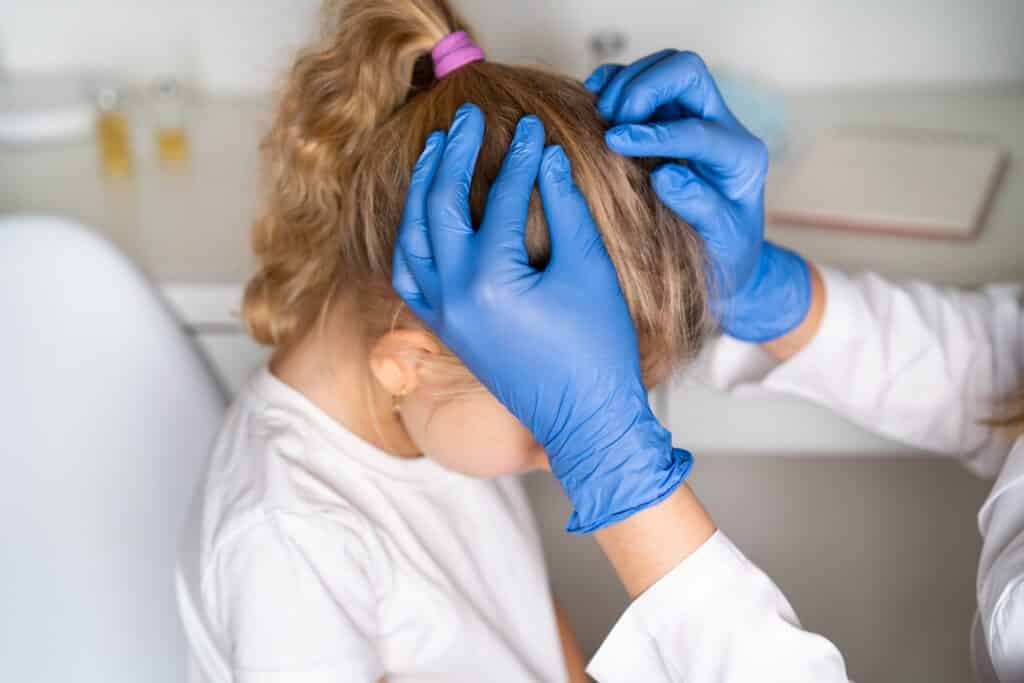
Head lice are a prevalent issue that frequently affects school-aged children. Adults, on the other hand, may also be prone to lice, depending on their circumstances. Regardless, dealing with head lice can be a frustrating and challenging experience. If you have never dealt with head lice before, you might not be sure what exactly you are looking at when an infestation occurs.
Understanding what attracts head lice, the indications, preventative methods, and treatment options available will assist you in making the right decisions should the occasion ever arise. Fortunately, although head lice are a nuisance in day-to-day life, they do not carry disease. So, if the mere mention of head lice causes you to scratch your head, then hopefully this bit of factual information on diagnosis and treatment will put your mind at ease.
What Exactly Are Head Lice?
Head lice are wingless, tiny insects that infect the hair on the scalp of humans, laying small eggs that resemble dandruff. They have grown alongside humans to the level that they can only survive by consuming human blood.
Lice feed on the scalp every 4-6 hours to sustain themselves. Head lice are most prominent in children between three to eleven years old, but infestations can affect anyone of any age.
Where Do Lice Originally Come?
Lice are spread from one host to another via direct personal contact. In most cases, a non-infected individual must come into direct head-to-head contact with an infected person. If you know someone with lice, it might be possible that they contracted them through a family member, friend, or stranger with whom they have regular contact. Infestation can also develop when objects such as brushes, towels, combs, and similar items are shared.
Life Cycle of Head Lice: 3 Stages
The lifecycle of headlice is composed of three stages:
- Nits. Nits are the eggs of head lice. They are difficult to spot and are commonly mistaken for dried hair spray droplets or dandruff. The adult female lays the nits, which take about a week to hatch.
- Nymphs. A nymph is the result of a nit hatching. Nymphs are similar to adult lice, except they are much smaller and not yet fully developed. A nymph develops into an adult louse in about a week.
- Adults. Adult head lice are about the same size as a sesame seed. They come in various colors from tan to grayish-white.
Early Indications & Symptoms of Head Lice?
Head lice symptoms are not usually visible, and it’s essential to know how to check yourself for lice. The signs are:
- Irritation and sleep difficulties (lice are usually most active at night)
- Swollen lymph glands in the neck
- A rash or tiny red bumps on the scalp
- Reddish-brown or tan bugs in the hair
- Severe itching on the ears, neck, and scalp
What You Need to Know When Treating Lice
Lice are not damaging to the health of a person, and they do not distribute viruses or other diseases. If lice are left untreated for an extended time, their tiny bites on the head may swell and become infected due to prolonged picking and scratching. This is especially common in children. Lice can be an inconvenience, but if you, your child, or someone you know catches them, there is always a solution.
Treating Head Lice
While rigorous cleaning can aid in the treatment of lice, keep in mind that the majority of head lice cases are unrelated to cleanliness. Because lice can hold their breath for up to 6 hours, children who shower frequently are just as susceptible to head lice as those who do not bathe regularly.
Comprehensive treatment of head lice and knowing the best lice treatment for kids is essential to ensure the removal of all lice present, as well as their eggs. Consider the following options for properly disposing of head lice:
- Use a non-toxic lice treatment to get rid of the lice. Head lice can be treated using a selection of over-the-counter products.
- Instruct your children to avoid any head-to-head contact while doing activities at school, home, and elsewhere.
- Make sure you don’t leave personal possessions in places like clothing hooks, desks, compartments, or cabinets, particularly in public places like work or school.
- Soak combs and brushes used by a person with head lice in hot water to disinfect them. Knowing how to clean the comb is always necessary to prevent an infestation.
- Remember to inspect hair every three days for any traces of nits and advise your family members to use a daily lice shampoo right away to help avoid spread or reinfestation.
- Vacuum floors, furniture, sofas, and rugs regularly. This is an effective step to help keep lice from spreading at home.
- If you are unable to eliminate head lice using at-home treatments, consult with your health care provider to determine the best option for you. Call ahead to notify them that you have an active lice infestation so they can prepare for your arrival.
Protect Your Family From Head Lice Infestation Using Licefreee
At Licefreee, our primary goal is to assist families dealing with lice infestations and treat them safely and effectively. You can count on our products to end your battle with head lice infestation and rely on our resources to clarify and answer any questions or concerns.
LiceFreee is a safe, effective, non-toxic alternative to traditional lice shampoos containing harsh chemical-based pesticides. In 1999 we launched our Original Non-Toxic head lice treatment, LiceFreee Gel, and have expanded our product line in the last two decades while maintaining our reputation as one of the most trusted and reliable products on the market. If you or someone you know is dealing with head lice, don’t wait, shop our online store today and get rid of those lice!
